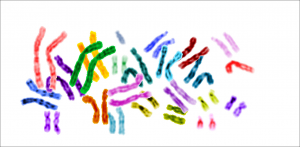SUNDAY, 23 OCTOBER 2011
Chromosomal fusions have been found to occur in certain lung and prostate tumours, as well in the leukaemias in which they were first identified. If a strongly promoted gene (i.e., one that is often switched on) becomes fused to a cancer-inducing oncogene that is usually switched off, the oncogene may be activated and tumour formation initiated.Since the chromosomal fusions are specific to cancer cells, any treatment that kills cells containing the fusion should leave the patient’s normal cells undamaged. The therapeutic potential of one such treatment, crizotinib, is now supported by a retrospective study of a subset of NSCLC patients whose cancer had a fusion between the strongly-expressed EML4 gene and the ALK oncogene. Those patients treated with crizotinib showed a significantly greater survival rate (at one and two year follow-ups) compared to untreated patients with the fusion. Since untreated patients showed survival rates similar to matched untreated patients without the fusion, it is unlikely that the fusion alone was sufficient to confer the increased survival rate.
This result is important, not least because it illustrates the need to select our trial participants with care. The effect of crizotinib in this specific fusion-containing cancer would probably have been missed in a larger, more heterogeneous patient group. It also supports the increasing trend towards choosing treatments based on patient genotypes.
There is an increasing realisation that cancer is not a single illness, but a multitude of different conditions requiring tailored treatment strategies. Yet in reality, it has proved harder than initially thought to translate genetic differences in cancer patients into personalised medicine. This study provides hope that, at least in some cases, that possibility may not be so far off after all.
Written by Bethany Jones

